About the School
Message from Director Anne Bordeleau

February 29, 2024
Welcome to the Azrieli School of Architecture & Urbanism (ASAU)!
We are proud to be an inspiring community of learning that provides students with a supportive environment in which to nurture their sense of purpose.
The ASAU’s long-standing engagement in speculative thinking and material craft, coupled with our commitment to addressing critical societal issues, offers students a range of perspectives on the discipline and the profession.
Our inclusive and diverse approach to education is reflected in the unique paths available at the ASAU. We are the only architecture school in Canada to offer three undergraduate majors — Conservation & Sustainability, Design, and Urbanism. With expertise in these areas, we are ready to respond to urgent questions of climate change, rapid urbanization, and the public realm.
At the graduate level, we offer a wide array of options (MArch, MAS, GDAC, PhD) and we continue to forge relationships across campus to expand opportunities for architecture students. We have joined a collaborative PhD in African Studies, and our Master of Architecture students can participate in a Collaborative Specialization in Climate Change, and soon, in Accessibility.
The number of partnerships and community-engagement projects is substantial — even unparalleled across schools of architecture in Canada — with activities that extend internationally through global studios, research partnerships, and scholarly networks.
In our research labs, we are conducting exciting and impactful work on materials and fabrication (CSALT); new and emerging digital technologies, from heritage to biomedicine (CIMS); anti-racist housing and public-interest architecture (Action Lab); climate (CLIFF); cities (C-URL), and contemporary issues in architecture (C R | P T | C).
In Ottawa, the ASAU has developed ongoing relationships with numerous local and national organizations, including Ottawa Community Housing, Gignul Non-Profit Housing, the 613-819 Black Hub, the National Capital Commission, the Canada Lands Company, and more.
Globally, we have emerging and continuing international collaborations with local partners in Ghana and Peru, and our faculty are engaged in significant collaborative ventures. The topics include housing (e.g. with UN-Habitat, most recently as part of the ICCCASU5 conference in Kenya), pedagogy (e.g. Dark Matter University, Journal of Architectural Education), fabrication (e.g. ETH Zurich DFAB lab), and heritage and conservation (e.g. International Council on Monuments and Sites, United Nations Development Programme, and UNESCO.)
Our position
The school occupies unceded non-Treaty, Algonquin Anishinaabeg territory. Acknowledging the legacies and atrocities that this occupation implies, we are committed to transforming our spaces, programs, and practices through honourable and respectful engagement with Indigenous peoples, land-based knowledges, and holistic approaches to architectural and urban design.
We take seriously our responsibilities as architectural educators, historians, practitioners, and students. Therefore, we seek to engage with social, political, and environmental concerns critically and inventively through our programs, community-engagement studios, research labs, design-build projects, and funded Directed Studies Abroad opportunities. Our conversations encompass ecological care and collective well-being, with sustainability and social justice at the forefront.
Through collaborative learning and research, we work earnestly to serve and build trust with diverse communities, near and far. Our aspiration is to cultivate creativity, hope, and resilience together.
Looking ahead
We have important work underway to consolidate our Bachelor of Architectural Studies (BAS) degrees, with two expected outcomes: All undergraduates will benefit from the full breadth of expertise across Conservation & Sustainability, Design, and Urbanism and all BAS students will be equally prepared for advanced placement in graduate programs.
We are also working to instill in our future designers a lively awareness of a shared planet. To that end, we are transitioning our curriculum, so that it begins with land and building relationships, and moves through broad ecosystems, the public realm, and existing built environments. Throughout, our teachings consider adaptive architecture, urbanism, and climate as integral to any design interventions.
The objective is for students to:
embrace both their responsibility and agency as designers and architects;
learn to confidently use their disciplinary expertise to work collaboratively with various stakeholders;
acquire a holistic view of the broader social, technological, and ecological context within which they intervene.
Join us!
The ASAU offers a solid professional educational experience in which students can develop their passion for working in the public interest with confidence and a vital sense of a shared aim.
Our outstanding team of faculty, instructors, and staff is here to support students and successfully guide them through an exciting and challenging curriculum that fosters their agency as designers. We look forward to welcoming you.
Warmly,
Anne
Anne Bordeleau, PhD, OAQ, MRAIC
Professor and Director, Azrieli School of Architecture & Urbanism
Accreditation
CACB
In Canada, the Canadian Architectural Certification Board (CACB) is the sole agency authorized by the Regulatory Organization of Architecture in Canada (ROAC) to accredit Canadian professional degree programs in architecture for the purposes of architectural licensure. Source: CACB
In 2024, the CACB granted the Azrieli School of Architecture & Urbanism a full six-year renewal of accreditation for the MArch program. The school’s next accreditation review will be in 2030.
For more information on CACB accreditation, see CACB Conditions for Accreditation.
History
The Azrieli School of Architecture & Urbanism
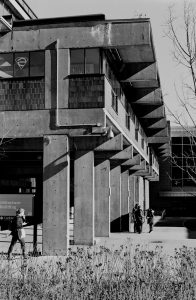
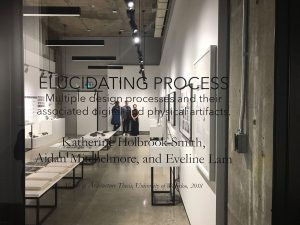
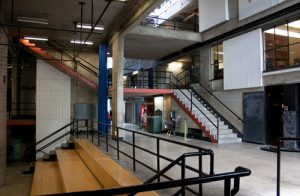

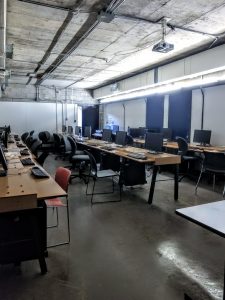
The School of Architecture opened in fall 1968 with 12 students and four faculty under the directorship of Douglas Shadbolt. The purpose-built architecture building followed four years later as the program grew in size and significance. A pivotal period in the school’s history took place under the directorship of Alberto Perez-Gomez (1983-86); it defined an era for the school’s pedagogy and left a lasting legacy of design thinking and production. These ideas have left a tangible layer onto the otherwise brut concrete walls.
Program History
The School offered a five-year undergraduate professional degree, accredited, from the outset in 1968, by the Ontario Association of Architects. The first degree was awarded in 1973. During the first few years, faculty ranks increased annually as the student body grew. By 1983, there were 300 students and 24 faculty members.
In 1997, the School developed a proposal to restructure its 5-year Bachelor of Architecture to a 4-year, preprofessional Bachelor of Architectural Studies (BAS) followed by a 2-year professional Masters of Architecture (M.Arch).
In 2009, the school instituted 3-year M.Arch (Professional) degree, and undergraduate BAS students could major in Design, Conservation & Sustainability, or Urbanism.
Read more about ASAU’s program history here.
Our Building
The Architecture Building - Building 22
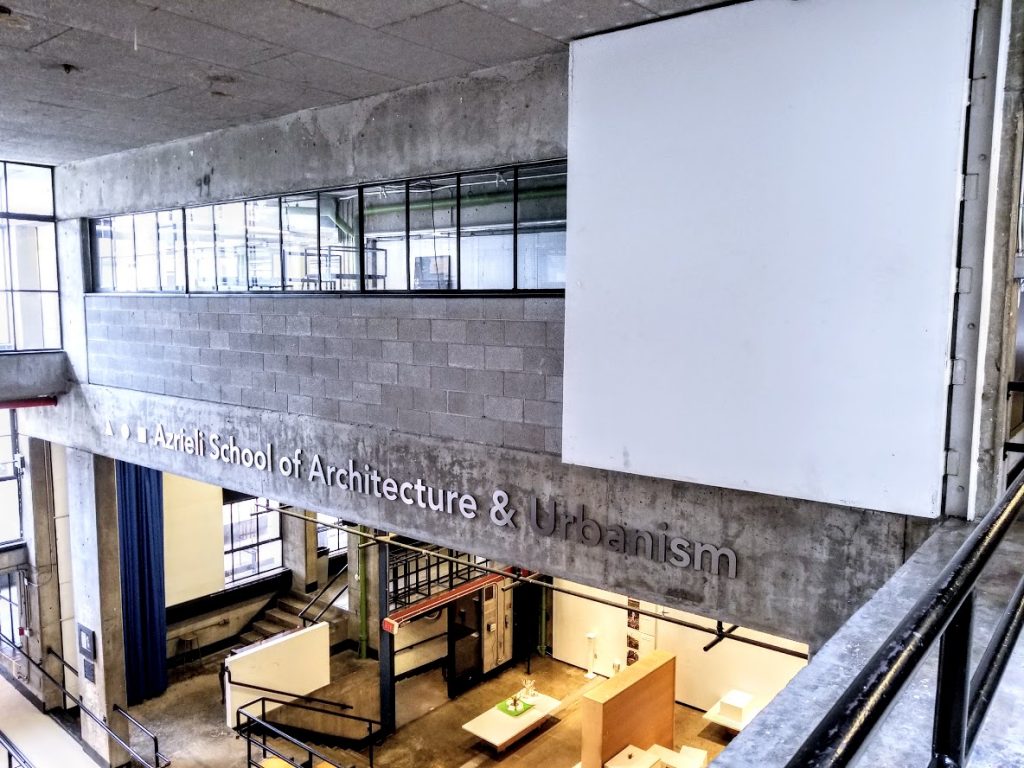
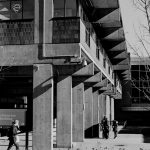


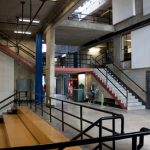

Building 22 at Carleton University is much more than a fine example of the late-1960s Brutalist architecture. Its strict tartan grid contains dynamic spatial relationships that display a clear commitment to the exchange of ideas, the vitality of community, and democratic ideals. As a purpose-built architecture school, it acts both as a pedagogical tool and a model environment for creative learning.
The central Pit, two perpendicular “streets” on different levels, and complex visual transparencies lend an urban quality to the interior. These spaces host both formal and informal events. Small transformations over time have honoured the architects’ original vision of “building as laboratory.” Now 50 years old, the school and university are exploring renovation strategies to prepare the building for its next half-century.
The Lightroom Gallery
The Lightroom Gallery is the main dedicated gallery space in the Azrieli School of Architecture and Urbanism. The space is a secure gallery space for exhibition of travelling exhibits, thesis work, alumni shows, and other special exhibitions.
View our events and learn more about our Lecture Series here.
Barbara A Humphreys Reading Room
Barbara A. Humphreys Memorial Reading Room is a notable resource for architecture and urbanism-related research. This room houses approximately 2000 volumes including journals and books focusing mainly on architecture and urbanism. This collection is available to the students for consultation and the room is staffed by student monitors. This space is used as a reading room, group workspace, and personal study space.
Our City
Ottawa - Our Nation's Capital

The Azrieli School of Architecture & Urbanism continues to increase its profile and strengthen ties with Canada’s National Capital Region, home to 1.4 million people. Community interaction, essential to the school’s mission, occurs in many ways. The school’s Local Advisory Board (LAB), not only provides advice and advocacy but also keeps us informed about community-based initiatives to which the school can contribute. Interaction with the broader community occurs through collaborative projects, sponsorships, research, an expanding array of continuing education programs, and public programming, including the school’s Forum Lecture Series and exhibitions in its Lightroom Gallery.
The school uses the Ottawa region as a design laboratory, working with community associations, developers, design professionals, and local governments to promote design excellence and advocate on behalf of the built environment.
As many architects practicing in the region are Carleton alumni, good community relations are also good alumni relations. Alumni, and other design professionals, play an important role in the ongoing review of student work, which occurs in a very public forum.
Ottawa is home to national institutions of art and culture. As Canada’s capital, it also possesses a wealth of significant Canadian architecture, historical and contemporary.
Research Labs
Action Lab
Director of the Action Lab: Menna Agha
The school’s Architecture Action Lab is a public-interest experimental studio. It aims to be an ‘imaginarium’ for community change and impact by positioning architects as activists who provide architectural, planning, and housing services to community groups.
Carleton Immersive Media Studios (CIMS)
Director of CIMS: Stephen Fai
Carleton Immersive Media Studio (CIMS) is a Carleton University research centre dedicated to the advanced study of innovative, hybrid forms of representation that can both reveal the invisible measures of architecture and animate the visible world of construction. As part of the Carleton University’s Azrieli School of Architecture, we are committed to exploring and developing innovative symbiotic relationships between the digital and fabricated 2D and 3D modes of representation. Our mandate includes the advancement and development of the tools, processes and techniques involved in the transformation of data into tangible and meaningful artifacts that impact the way we see, think, and work in the world.
CIMS was established as an Organized Research Unit, within the Azrieli School of Architecture and the Faculty of Engineering at Carleton University, through a “New Opportunities” Canadian Foundation for Innovation grant awarded in 2002.
Carleton Sensory Architecture and Liminal Technologies Laboratory (CSALT)
Director of CSALT: Sheryl Boyle
The CSALT Laboratory at the Azrieli School of Architecture and Urbanism is focused on the study of materiality in architecture. The goal of this research lab is to effect and contribute to the understanding, application and invention of the material nature of architecture, construction and design. Of particular interest in the lab are the secondary properties of materials, the combination of organic and inorganic materials and the reassessment of traditional materials and methods within the context of our contemporary condition. The Facility is located in the Architecture Building.
Carleton Urban Research Lab (CURL)
The Directors of the Carleton Urban Research Lab are: Catherine Bonier and Ozayr Saloojee
The Carleton Urban Research Lab (c-url) at the Azrieli School of Architecture & Urbanism promotes design thinking — seeking ways to expand research, teaching, and engagement around the Lab’s three central themes: water, cities, and equity. C-URL was founded by Saloojee and Bonier in January of 2017 to support grounded, ethical research engagement and to foster local and international interdisciplinary collaborations.
Carleton Research | Practice of Teaching | Collaborative (C R | P T | C)
The Director of the Carleton Research | Practice of Teaching | Collaborative is Federica Goffi
C R | P T | Collaborative | is formed by PhD Candidates, PhD students, Post-Professional Master students and faculty of the Azrieli School of Architecture & Urbanism at Carleton University, Ottawa, Canada. The Collaborative pursues research in the humanities with a diverse research agenda that reflects the interests of the collaborators through the Practice of Teaching in academic settings in architecture.
C R | P T | C activities | are collaborative in nature and include research, publications, symposia, and exhibits.
C R | P T | C works | transmediate between the written word and epistemic constructions.
The Carleton Climate Futures Design Lab (the CLIFF)
Director of the CLIFF: Zachary Colbert
The Carleton Climate Futures Design Laboratory combines design and scholarly research in an interdisciplinary setting to explore, anticipate and prototype climate futures in the built environment. This work elucidates productive linkages between architecture and politics toward elevating architecture’s capacity for political engagement both in the classroom and in the field. Through the lens of ‘atmospheres,’ our research weaves together the technical, ethical and post-humanist challenges of our time at the scales of the building and the city. These endeavours intersect with preexisting extensive and international efforts spanning disciplines, ideologies and geographies to re-imagine the North American way of life to address the impacts of climate change and societal climate change adaptation. We seek to unite disparate conversations across disciplines and to examine the interdependent scales of the individual, the community, the city and the region through public consultation, symposia, design charrettes, publications and speculative architectures. Climate change is a planetary phenomenon and while the potential for climate change to impact low-lying, coastal cities is clear; the potential of climate change to adversely impact energy and housing market fluctuations, human migration patterns, regional ecosystem stability, and severe weather events will be felt in inland cities as well. This research provides an opportunity to examine and redefine 21st century practices and paradigms related to North American multi-family housing, urban design, and building construction practices. Additionally, we seek to identify and define civic architectural practice strategies, proactive approaches from within the architecture profession that engage stakeholders in laying the groundwork for climate change adaptation at community and municipal levels.